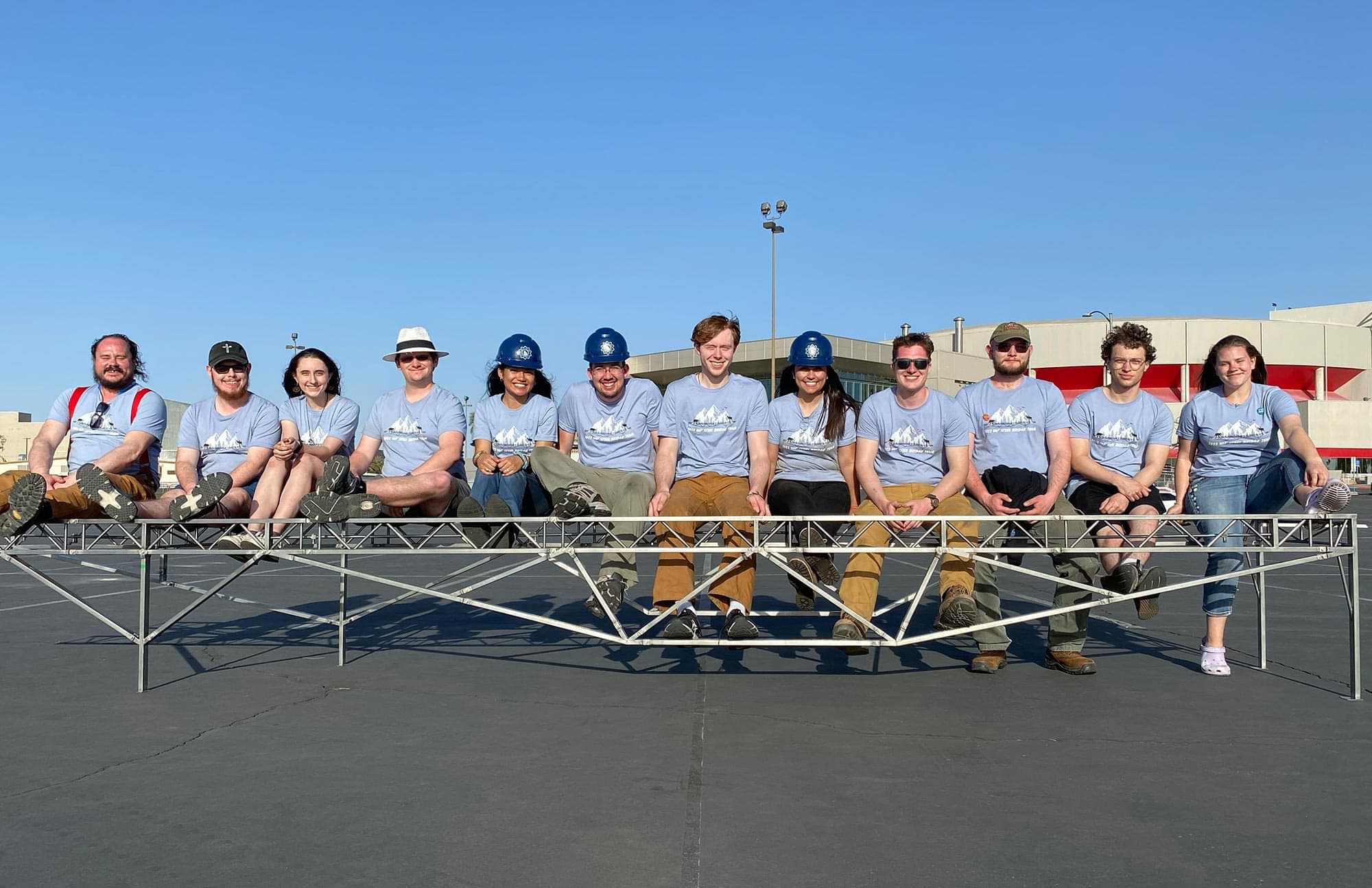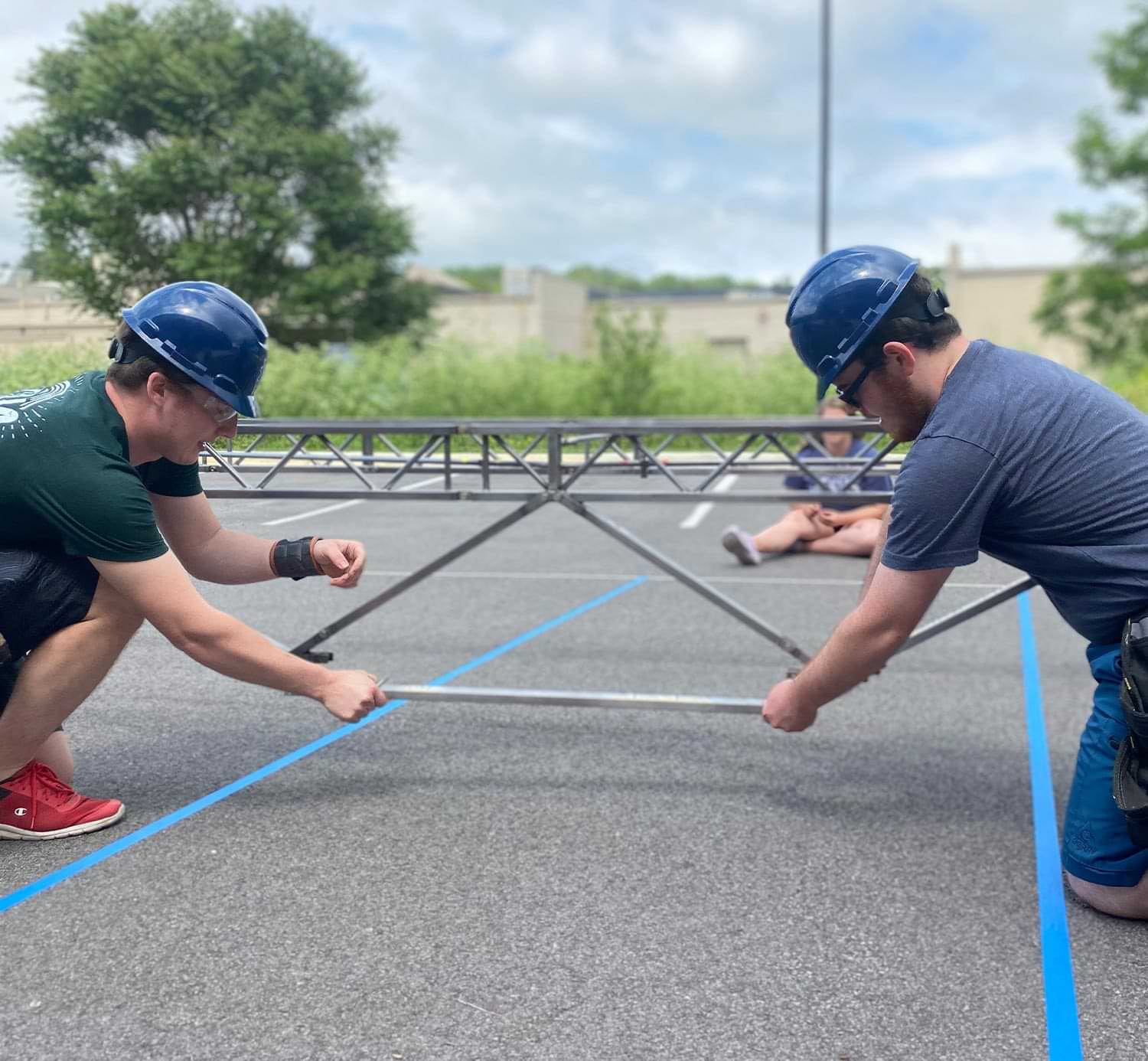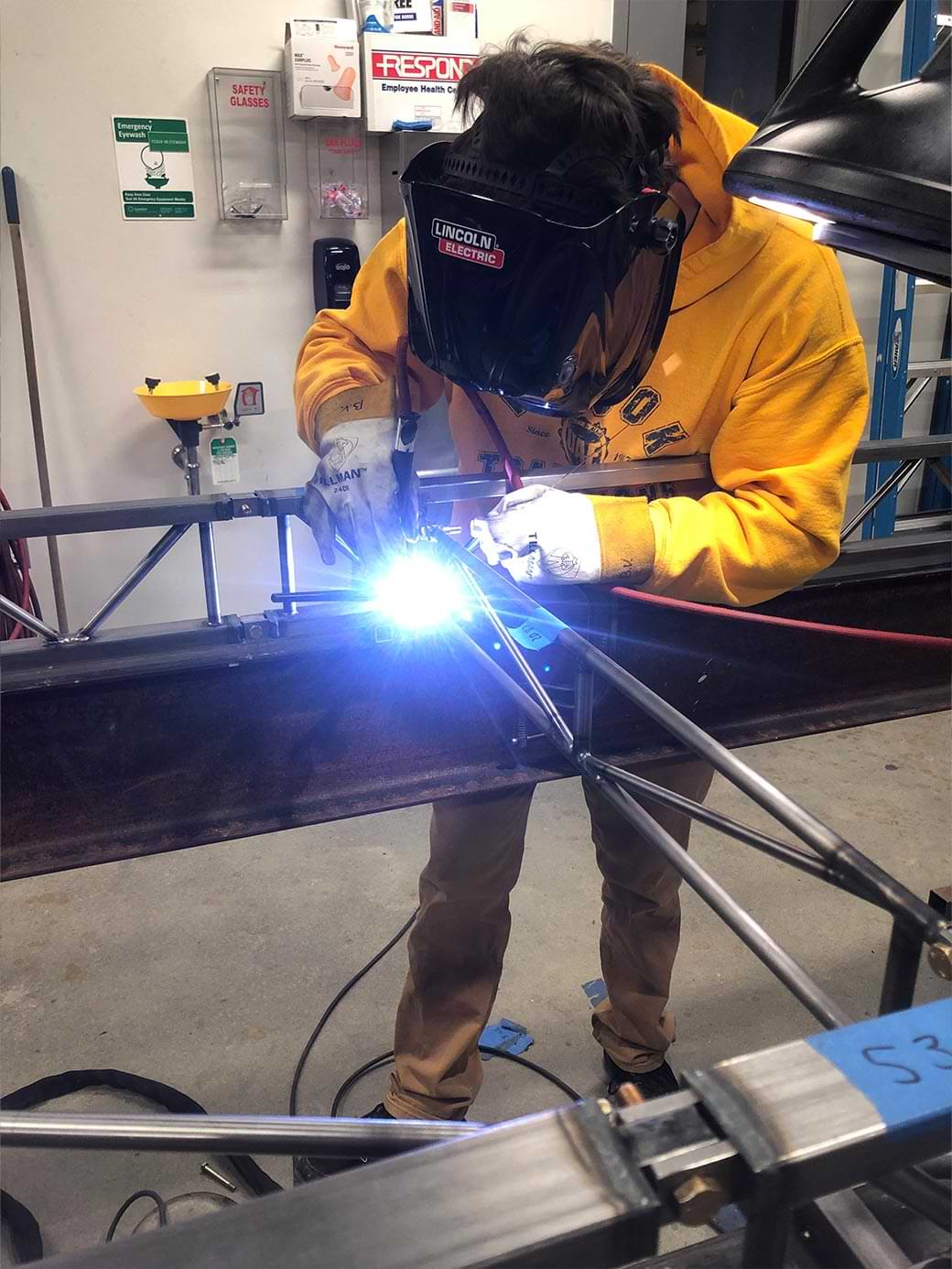
The entire UAF Steel Bridge team sits on the bridge after competing at the regional competition at University of Nevada Las Vegas. From left: faculty advisor Wilhelm Muench, Brandon Hansen, Heather McKenzie, Cynan Hellman, Haylie Cortez, Lucas Gomes, Porter Baffrey, Jenna Hernandez, Ben VanderHart, Zach Miller, Zach Stanish, and Mady Weeks.
s a kid, Ben VanderHart fondly remembers building imaginary worlds with his brothers inside their Delta Junction home.
“We had a whole room of our house covered in LEGOs,” he says. “We would go in there for hours and build all sorts of things.”
VanderHart is a recent graduate of the civil engineering program at the University of Alaska Fairbanks, or UAF, where he led a team of engineering students to competitively design one of the best steel bridges in school history—and the United States.
UAF took second place at the 2022 Student Steel Bridge Competition in May at Virginia Tech, finishing only behind the defending champions from the University of Florida. The annual engineering contest, sponsored by the American Institute of Steel Construction, drew thirty-eight collegiate teams from across the United States.
“These were some of the biggest engineering schools in the nation,” says VanderHart, the team captain. “It felt really good to come all the way from Fairbanks and finish strong. I was really impressed with our performance.”
UAF first competed at Steel Bridge in 1993, won it all that year, then podiumed the following year. Since then, it had not finished in the top three—that is until this year’s competition, when VanderHart, Zach Miller, and Branden Hansen helped put UAF back on top after constructing its bridge in 5 minutes, 20 seconds.
“We did the whole competition entirely clean—no penalties at all—which makes a big difference,” says VanderHart.
During the event, competitors must follow strict protocols in order to build a twenty-foot-long steel bridge, which is designed and pre-built months in advance. The bridge must include pieces no longer than forty-two inches long and follow codes provided in the competition manual. This year’s manual was about fifty pages long.

Ben VanderHart (left) and Branden Hansen (right) practice timed construction of the steel bridge in a hotel parking lot before National Finals at Virginia Tech.

“This year we had around fifty pieces of the bridge along with around eighty bolts,” says VanderHart, who designed UAF’s steel bridge. “At practice, we would assemble it in under five minutes with three people.”
The University of Alaska Anchorage’s steel bridge team also competed at the Student Steel Bridge Competition and finished sixteenth overall.
“It was a lot of fun traveling with them,” says VanderHart. “We hung out a lot, even though we are technically rivals.”
With all the COVID-19 restrictions on campus, Mady Weeks’ freshman year at UAF didn’t include much socialization. But the following school year, once things opened up more, the engineering student from Nikiski discovered UAF’s American Society of Civil Engineers and Associated General Contractors Student Chapter.
The chapter includes engineering students who want to be actively involved in their education by competing on a regional and national level in the steel bridge and concrete canoe competitions. UAF advisor Wilhelm Muench helps the steel bridge team reach their potential.
“Wilhelm is awesome,” Weeks says. “If you don’t understand it, he’ll explain it to you in a different way. And then if you don’t understand that, he’ll teach it again. And if you’re still not getting it, he’ll make sure that you get it. He’s an awesome teacher.”

“It’s such a fun club,” Hernandez says. “I like getting to work with other students.”
Hernandez and Weeks are now looking to become UAF’s next generation of steel bridge leaders. They gained valuable experience participating in the finals at Virginia Tech, along with VanderHart, Hansen, Miller, Lucas Gomes, and Haylie Cortez.
“Words cannot describe how good it felt to get second place,” Hernandez says.
“All the money we spend comes from local Alaska companies that help support us,” VanderHart says. “AGC has given us a lot of support over the years, so we’re very grateful for that. We couldn’t do what we do without their generosity.”
VanderHart, who now designs bridges for PND Engineering, Inc. in Anchorage, hopes that UAF’s second-place finish will be good for its future fund-raising efforts.
“That’s something we can really show off,” he says.